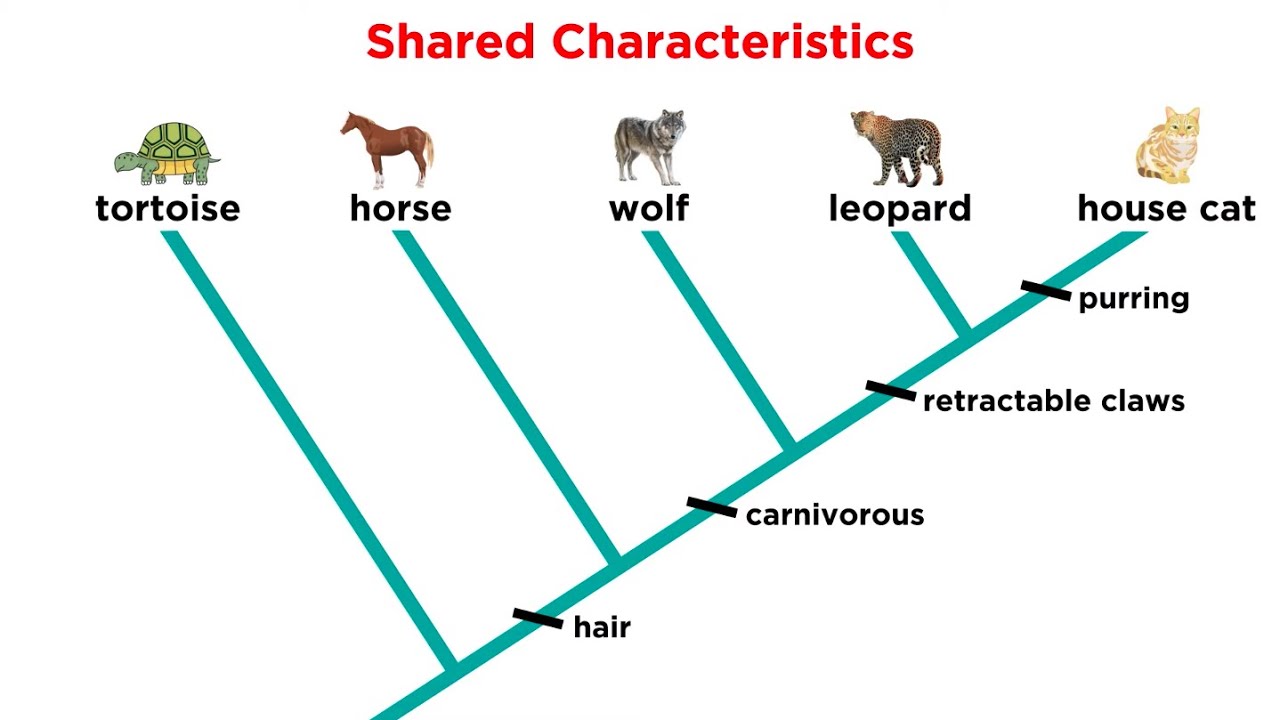
Cladistics is a fascinating field of biology that has revolutionized the way we understand the relationships between different species. By analyzing shared traits and using sophisticated algorithms, cladistic analysis has allowed scientists to uncover the intricate web of evolutionary history. In this article, we will delve into the world of cladistics and explore 14 mind-blowing facts that highlight the significance and impact of this field. From revealing unexpected connections between diverse organisms to challenging long-held beliefs about evolutionary relationships, these facts will showcase just how powerful cladistics can be in unraveling the mysteries of life on Earth. So, buckle up and get ready to expand your knowledge as we dive into the incredible world of cladistics!
Key Takeaways:
- Cladistics helps scientists understand how different species are related through shared characteristics, revolutionizing our understanding of evolutionary history and contributing to conservation efforts.
- By using the principle of parsimony and analyzing homologous traits, cladistics has reshaped the field of taxonomy and provided insights into human evolution, making it a mind-blowing tool in biology.
The Origin of Cladistics
Cladistics, also known as phylogenetic systematics, is a method used to classify organisms based on their evolutionary relationships. The concept of cladistics was first introduced by German entomologist Willi Hennig in the mid-20th century.
The Importance of Cladistics
Cladistics revolutionized the field of evolutionary biology by providing a systematic approach to understanding the evolutionary history of organisms. It helps scientists analyze and interpret patterns of shared characteristics to determine the relationships between different species.
Principle of Parsimony
One of the fundamental principles in cladistics is the principle of parsimony, which states that the simplest explanation that requires the fewest evolutionary changes is usually the most accurate. This principle helps scientists reconstruct evolutionary trees and make predictions about ancestral relationships.
The Use of Homologous Traits
Cladistics focuses on the use of homologous traits, which are characteristics shared by species due to their common ancestry. By analyzing these shared traits, scientists can infer the branching patterns of evolutionary relationships and construct cladograms.
Shared Derived Traits
Cladistics also places great importance on shared derived traits, also known as synapomorphies. These are unique characteristics found in a group of organisms that originated in their most recent common ancestor. These traits help determine which species belong to the same clade.
Phylogenetic Trees
Cladograms, also known as phylogenetic trees, are diagrams that illustrate the evolutionary relationships between different species. They depict branching patterns, with each branch representing a divergence in evolutionary history.
Understanding Ancestral Relationships
Using cladistics, scientists can unravel the ancestral relationships between different groups of organisms. By examining shared characteristics and building cladograms, they can determine which species share a common ancestor and how they are related.
Molecular Phylogenetics
Cladistics has expanded to include molecular data, such as DNA sequences, in addition to morphological characteristics. Molecular phylogenetics allows scientists to compare genetic information and further refine our understanding of evolutionary relationships.
Cladistics and Conservation
Cladistics plays a crucial role in conservation biology by helping scientists identify species that are at risk of extinction. By understanding the evolutionary relationships between species and their respective habitats, conservation efforts can be targeted more effectively.
Application in Paleontology
Cladistics has been widely applied in paleontology to study the evolutionary history of extinct organisms. Fossil evidence is used to identify shared traits and reconstruct the relationships between ancient species, providing insights into the evolution of life on Earth.
Challenges in Cladistics
Despite its usefulness, cladistics faces challenges in accurately determining ancestral characteristics and resolving complex evolutionary relationships. Ongoing research and advancements in technology are continuously improving the accuracy of cladistic analyses.
The Impact on Taxonomy
Cladistics has had a profound impact on the field of taxonomy, the science of classification. By providing a systematic framework based on evolutionary relationships, cladistics has helped refine and redefine taxonomic categories.
Cladistics and Biogeography
By analyzing the distribution patterns of species and their evolutionary relationships, cladistics contributes to the field of biogeography. It helps scientists understand how organisms have dispersed and diversified across different regions over time.
Cladistics and Human Evolution
Cladistic analyses have shed light on the evolutionary relationships between modern humans and our ancestral relatives. By comparing shared traits and genetic data, scientists have reconstructed our evolutionary history and identified our closest kin.
Cladistics revolutionized our understanding of evolutionary relationships, but there's more to explore in the fascinating world of biology. Uncover the secrets of phylogenetics, which delves deeper into the evolutionary history of organisms. Taxonomy classification systems provide a framework for organizing and understanding the vast diversity of life on Earth. Lastly, evolutionary biology encompasses the study of how species change and adapt over time, offering insights into the very nature of life itself. Each field contributes a unique perspective to our understanding of the living world around us.
Was this page helpful?
Our commitment to delivering trustworthy and engaging content is at the heart of what we do. Each fact on our site is contributed by real users like you, bringing a wealth of diverse insights and information. To ensure the highest standards of accuracy and reliability, our dedicated editors meticulously review each submission. This process guarantees that the facts we share are not only fascinating but also credible. Trust in our commitment to quality and authenticity as you explore and learn with us.
